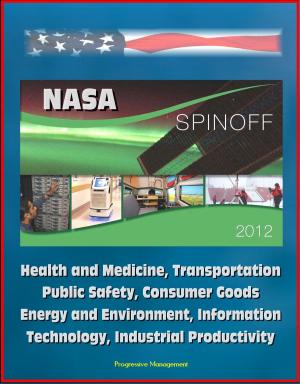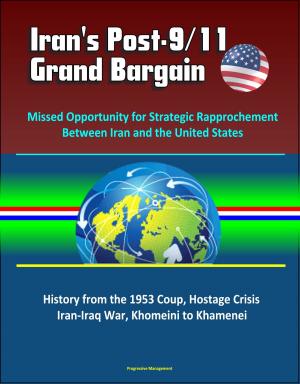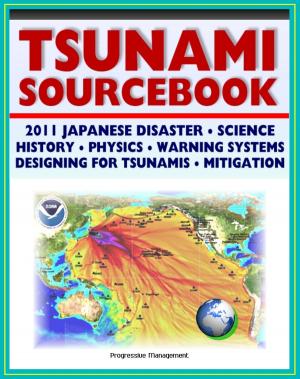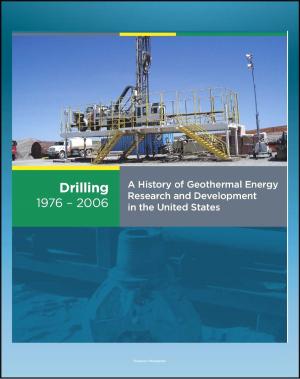Planning for a Peaceful Korea: North Korea's Strategy, Last Worst Place on Earth, Human Rights in North Korea, China's Goals and Strategies for Korean Peninsula, Japan's Grand Strategy, Arms Control
Nonfiction, History, Asian, Asia| Author: | Progressive Management | ISBN: | 9781310149986 |
| Publisher: | Progressive Management | Publication: | May 5, 2015 |
| Imprint: | Smashwords Edition | Language: | English |
| Author: | Progressive Management |
| ISBN: | 9781310149986 |
| Publisher: | Progressive Management |
| Publication: | May 5, 2015 |
| Imprint: | Smashwords Edition |
| Language: | English |
The monographs in this book were all commissioned as part of a project sponsored by the Nonproliferation Policy Education Center (NPEC), the U.S. Air Force's Institute for National Security Studies, and the U.S. Army War College's Strategic Studies Institute. They were written to help three working groups develop strategies to curb the threat posed by North Korea's strategic weapons programs. Central to these groups' efforts was competitive strategies analysis. As detailed in an earlier Strategic Studies Institute volume, Prevailing in a Well-Armed World, this approach requires analysts to examine four sets of questions. Stephen Bradner in his monograph, "North Korea's Strategy" (Chapter 2 of this volume), examines the first three sets of questions. These concern what one's strategic assumptions and goals are, who the likely key third actors are, and what strategies would make the most sense for each party to pursue. The last set of questions concerns what the relative costs and risks might be of the alternative strategies devised. These questions were discussed in consultations with experts and government officials after the working groups made their findings regarding the first three sets of questions. The groups' final report, which is this volume's first chapter, has received a good deal of attention. Its recommendations concerning U.S. nuclear and space cooperation with North Korea were detailed in The Asian Wall Street Journal and The Washington Post and were also highlighted in The New York Times, USA Today, and Aviation Week. More important, the report caught the attention of senior-level officials within the State Department, the Central Intelligence Agency, and the Defense Department, all of whom asked for and received private briefings on the report. This volume, of course, consists of more than just the working groups' final report. In addition, it includes all of the research that NPEC and the Institute for National Security Studies commissioned to prepare the working groups. Some of this analysis, such as Stephen Bradner's monograph on North Korea's strategy (Chapter 2), Joseph Bermudez's and Sharon Richardson's projection of North Korea's future strategic weapons efforts (Chapter 3), and Jack Rendler's monograph on human rights (Chapter 4), is easily identifiable in the final report. However, the differing analyses of China's strategy toward Korea by Admiral Eric McVadon and U.S. Army retired Colonel Larry Wortzel (Chapters 5 and 6), Victor Cha's study of Japan's views of Korea (Chapter 7), Marcus Noland's analysis of the economic determinates of Korean unification (Chapter 8), and the conventional arms control analysis of Bruce Bennett (Chapter 9) were just as critical to the work groups' deliberations. Indeed, without them, the group would have been unable to answer the competitive strategies questions necessary to produce the final report's recommended alternative strategies.
The monographs in this book were all commissioned as part of a project sponsored by the Nonproliferation Policy Education Center (NPEC), the U.S. Air Force's Institute for National Security Studies, and the U.S. Army War College's Strategic Studies Institute. They were written to help three working groups develop strategies to curb the threat posed by North Korea's strategic weapons programs. Central to these groups' efforts was competitive strategies analysis. As detailed in an earlier Strategic Studies Institute volume, Prevailing in a Well-Armed World, this approach requires analysts to examine four sets of questions. Stephen Bradner in his monograph, "North Korea's Strategy" (Chapter 2 of this volume), examines the first three sets of questions. These concern what one's strategic assumptions and goals are, who the likely key third actors are, and what strategies would make the most sense for each party to pursue. The last set of questions concerns what the relative costs and risks might be of the alternative strategies devised. These questions were discussed in consultations with experts and government officials after the working groups made their findings regarding the first three sets of questions. The groups' final report, which is this volume's first chapter, has received a good deal of attention. Its recommendations concerning U.S. nuclear and space cooperation with North Korea were detailed in The Asian Wall Street Journal and The Washington Post and were also highlighted in The New York Times, USA Today, and Aviation Week. More important, the report caught the attention of senior-level officials within the State Department, the Central Intelligence Agency, and the Defense Department, all of whom asked for and received private briefings on the report. This volume, of course, consists of more than just the working groups' final report. In addition, it includes all of the research that NPEC and the Institute for National Security Studies commissioned to prepare the working groups. Some of this analysis, such as Stephen Bradner's monograph on North Korea's strategy (Chapter 2), Joseph Bermudez's and Sharon Richardson's projection of North Korea's future strategic weapons efforts (Chapter 3), and Jack Rendler's monograph on human rights (Chapter 4), is easily identifiable in the final report. However, the differing analyses of China's strategy toward Korea by Admiral Eric McVadon and U.S. Army retired Colonel Larry Wortzel (Chapters 5 and 6), Victor Cha's study of Japan's views of Korea (Chapter 7), Marcus Noland's analysis of the economic determinates of Korean unification (Chapter 8), and the conventional arms control analysis of Bruce Bennett (Chapter 9) were just as critical to the work groups' deliberations. Indeed, without them, the group would have been unable to answer the competitive strategies questions necessary to produce the final report's recommended alternative strategies.















